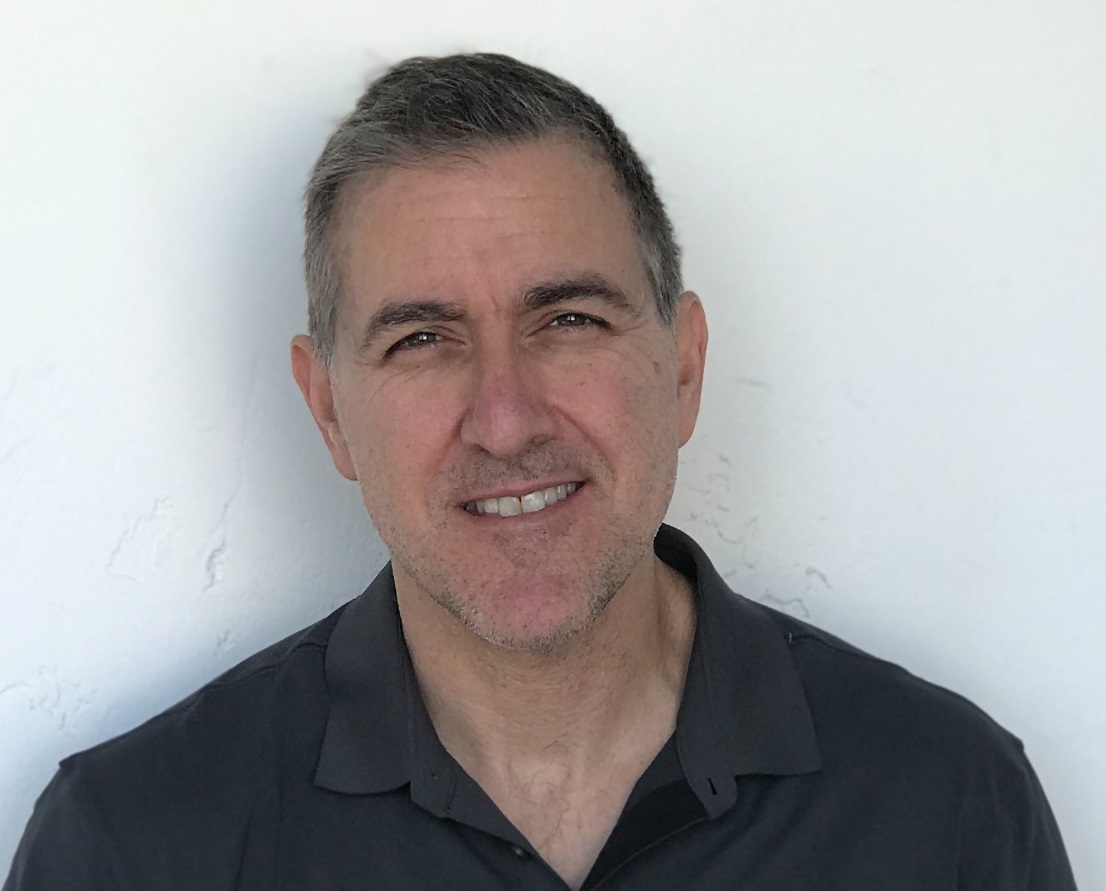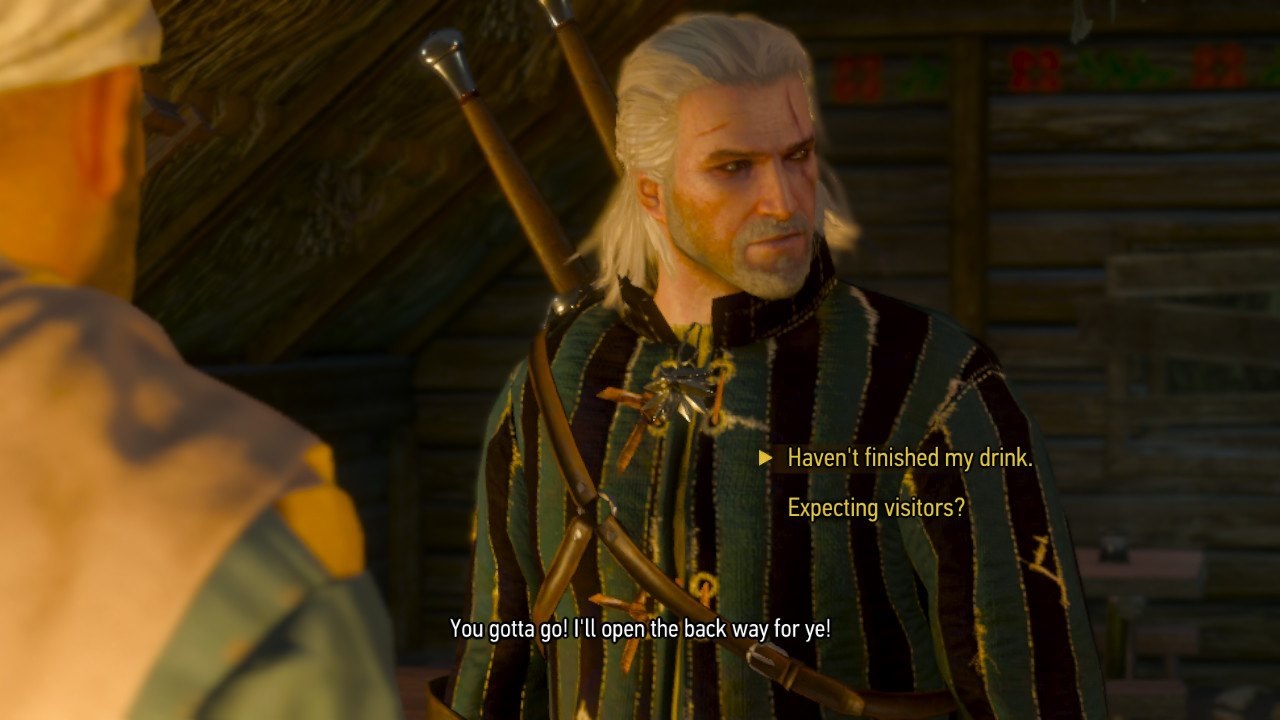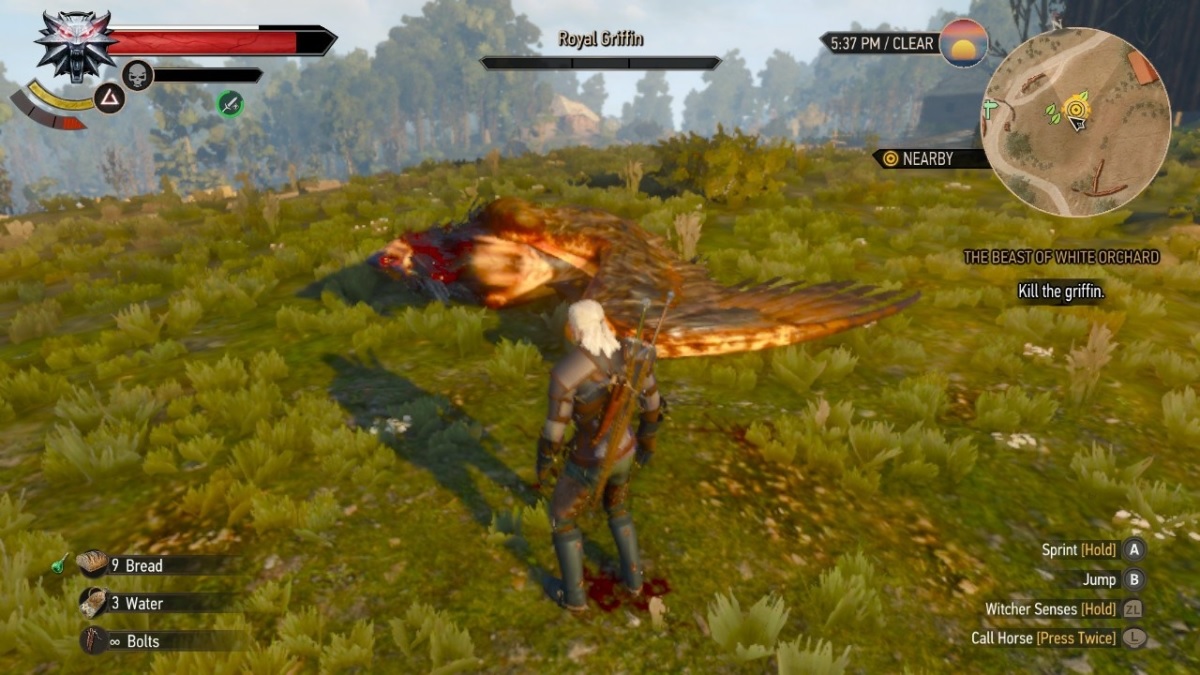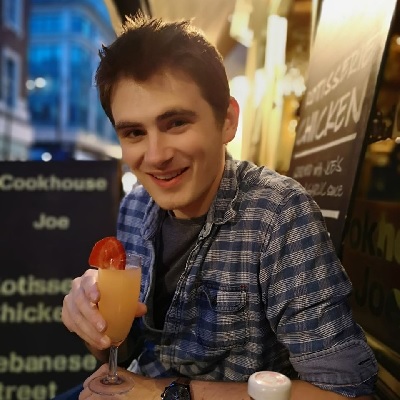You’d think the news that The Witcher 3: Wild Hunt would be coming to Nintendo Switch would be met with awe, delight, and celebration. But when rumors started to circulate earlier this year that a port would be announced, the idea was met almost instantly with incredulity and derision. On Twitter, blocky, textureless shots of the PC version on the lowest possible settings made the rounds, mockingly labeled as leaked Switch screens. After the official announcement and trailer came during Nintendo’s E3 2019 Direct, one IGN commenter instantly dubbed it “the degraded edition.”
“No one thought this game was possible in this format—we had doubters everywhere, even internally,” explained Matthew Karch, CEO of Saber Interactive, the third-party developer responsible for bringing The Witcher 3 to Switch. “When we put together the first working port, people still believed we were somehow faking it. So it was a pretty gratifying experience to beat the odds on a project like this.”

Courtesy Saber Interactive
That’s perhaps a mild way of describing what many have called the most ambitious Switch port yet. Look over the reviews of the original versions of The Witcher 3, and you can see why. Critics praised the 2015 game for its sheer size and the depth of its epic fantasy world; one of the less positive reviews actually complained it had “too much content.” A single completionist playthrough can take nearly 200 hours to complete—and that’s without The Witcher 3’s two sizeable expansions, Hearts of Stone and Blood and Wine, which Saber also included in its port. It’s no wonder so many viewed the prospect of bringing that experience to less powerful hardware as impossible.
Despite this, Karch and the rest of the Saber Interactive team remained committed to Giving Switch players the ability to get lost in Geralt of Rivia’s sweeping adventure. Thankfully, it helped that the New Jersey–based developer wasn’t starting entirely from scratch. “Saber originally worked with CD Projekt Red on the PS4 Pro and Xbox One S versions of The Witcher 3,” Karch said. “We had a great working relationship on that project, and what’s more, our studio that partnered with CDPR is [located] in Russia (CDPR is, of course, in Poland).” This proximity, combined with the cultural similarities, made it very easy for both Saber and CDPR to work together again.
In porting the full Witcher 3 experience to the Switch, Saber Interactive followed in the footsteps of developers like Panic Button (Wolfenstein: Youngblood, Doom) and Iron Galaxy (Diablo III, Overwatch), teams that had already had great success in bringing other established games to the platform. However, top-down dungeon crawlers and linear first-person shooters are a little different to the wide open world CDPR realized back in 2015.

What’s more, when it comes to pure power and graphical fidelity, all the Switch ports mentioned above are technically “lesser-than” when compared to the versions available on other platforms. And yet, in the years since the console’s release, time and again players have proven their willingness to accept some minor compromises if it means having the ability to take it with them anywhere; it’s simply more convenient. This sort of acceptance is what both Saber Interactive and CDPR hoped to be tapping into, giving them the confidence that an audience for a portable version of The Witcher 3 was, in actual fact, there.
Karch told me he’d known the endeavour wouldn’t necessarily be an easy one, but he’d felt that Saber Interactive, with its origins similarly rooted in independent game development, would be up to the task. “When the opportunity came to work on the Switch version of The Witcher 3, we saw it as a great opportunity to keep working [with CDPR] and push the envelope even further with their incredible IP.” The project gradually went from the team initially feeling somewhat uncertain it could be done to eventually treating the work with a sense of public duty: “It’s the Witcher—a series that everyone should play.”
The team needed to take several shortcuts to get CDPR’s game running on the Switch’s Nvidia Tegra X1 (a chip not dissimilar to those used in some smartphones). As such, Karch himself was initially anxious. “Obviously the key concern was making sure the game looked great and ran at a solid frame rate,” he said. “Those concerns were definitely tied into working with more limited processing power and memory constraints. We felt that if we could deliver a product that looked like it wasn’t fraught with compromise that it would be well received.
Despite these worries, Saber Interactive doubled down and focused its efforts to deliver a portable Witcher 3 experience that was every bit as immersive as the original release. The Nintendo Switch version may feature textures that are a little more blurred, with a less staggering draw distance and some environmental pop-in here and there, but it preservers visual flourishes like enemy decapitations, dynamic lighting, and true water ripple physics. All this was accomplished while squeezing The Witcher 3 and its two DLCs down to fit on a quaint 32 GB game cartridge, running at a resolution of 720p when docked and 540p when played in handheld mode.

The Witcher 3: Wild Hunt on Nintendo Switch might not hold a candle to its PS4, PC or Xbox One counterparts when you directly compare the visuals side by side, but Karch reaffirmed that the port job was never about that. Instead, it was about assessing all the many technical considerations and cleverly paring them back in a way that made sense. “When you make a game like this, you need to plan properly, to understand the impact that each compromise is going to have on the overall experience,” Karch said. “If we lower resolution, reduce quality of certain effects, or remove certain graphical features, what impact is that going to have on the overall experience?” Looking back, Karch considers Saber Interactive’s biggest technical achievement to be “[p]roperly balancing these considerations so that the overall experience was as close as possible to the original game.”
So did Saber succeed in that goal? The port’s Metacritic score is firmly in the green, from critics and users alike. The tech experts at Digital Foundry deemed it a “mobile miracle.” Even God of War director Cory Balrog is an avowed fan.
This year has been huge for Saber Interactive in general, with the studio releasing a new game developed in-house, World War Z, and a multiplatform HD remaster for Ghostbusters: The Video Game Remastered—the latter of which launched just 11 days before the release of CDPR’s behemoth. Alongside The Witcher 3, the company also lent its porting expertise to Switch versions of Call of Cthulhu and Vampyr.
When asked how these ports compared with one another, Karch was quick to point out, perhaps unsurprisingly, that none of them were quite as strenuous as The Witcher 3. “Ghostbusters is an older game that we needed to make run on updated hardware, and that meant the concerns about visual fidelity or frame rate didn’t need to be so high,” he said. “It ended up really great for what we set out to accomplish, we are very proud of it. The Witcher, on the other hand, was all about taking something intended for a higher spec and making it run well on the Switch, which presented much more of a challenge. It was actually quite similar to what we did on our port of Vampyr for Focus Home Interactive.”

Comments like these suggest that comparable Switch ports of past and modern releases may become even more common in the future. If Saber Interactive’s efforts on The Witcher 3: Complete Edition show us anything, it’s that even seemingly insurmountable technical boundaries can be overcome with the correct approach and enough technical knowhow—at least for the time being. As the PlayStation 5 and Xbox Series X arrive late next year and, as all new consoles do, gradually supplant their predecessors, the calculus may well change. Still, the immediate future of Switch ports looks bright.
Looking back at the team’s work on The Witcher 3, Karch remains confident that it was all worth it, citing the platform-holder itself as kicking off a whole new era of handheld gaming. “Nintendo has proven with games like Breath of the Wild that truly immersive game experiences are totally possible on a portable device. Few games are as magical or as immersive as The Witcher 3, and being able to bring that to audiences that have either already enjoyed it or are just now finally getting a chance to play was too good to resist.”
But what about a certain other highly anticipated title from CD Projekt Red? Would that ever be plausible Switch port for Saber Interactive?“It’s impossible for me to speculate on anything to do with Cyberpunk 2077,” Karch said. “I’m just anxiously awaiting it like everyone else!”
Header image: CD Projekt

Often considering himself to be the world’s biggest Timesplitters fan, Aaron Potter eventually got over this obsession enough to try other games—sometimes writing about them for such outlets as Kotaku UK, VG247, PC Gamer and others. There’s nothing he loves more than getting lost within a deep single-player campaign unafraid to challenge his expectations. But, failing that, you’ll likely find him passionately debating why Christopher Eccleston was the best incarnation of Britain’s favourite Timelord.